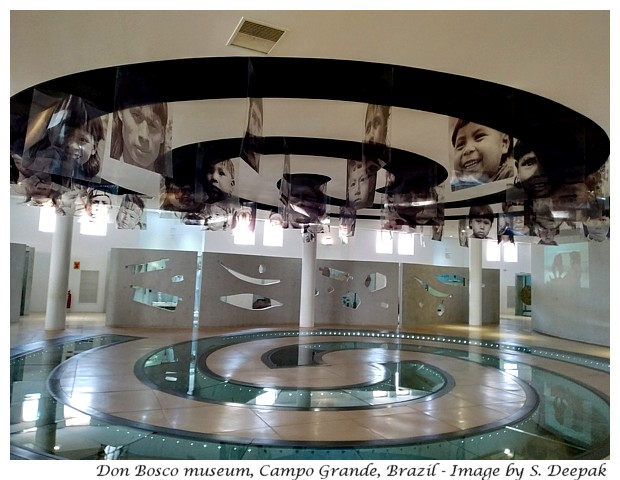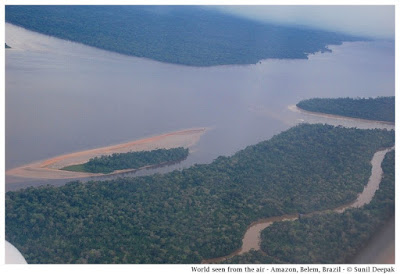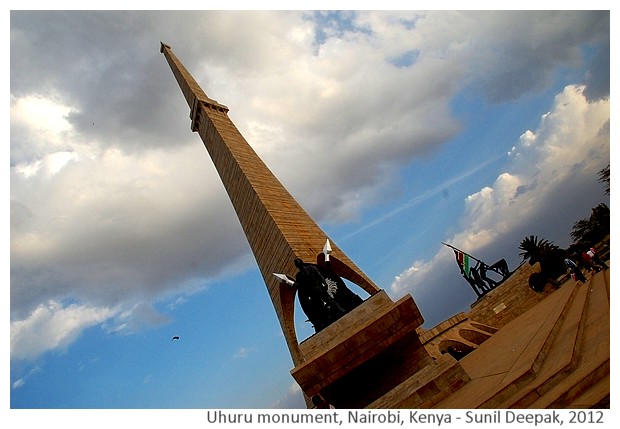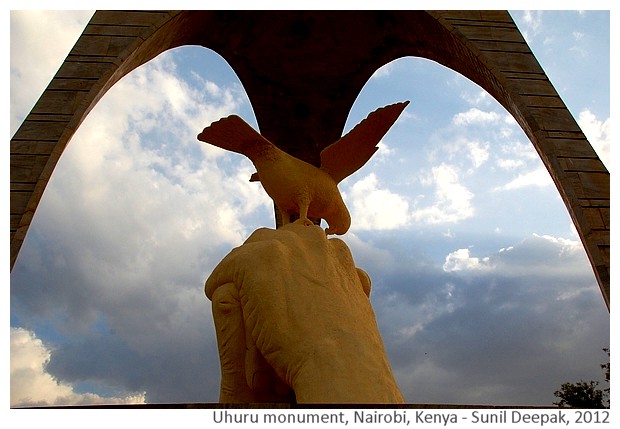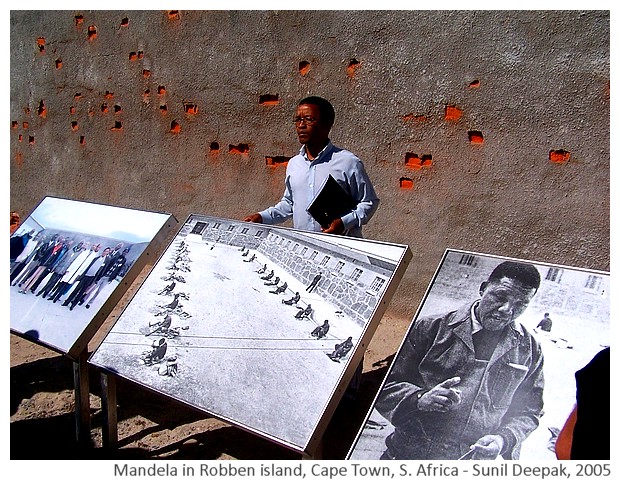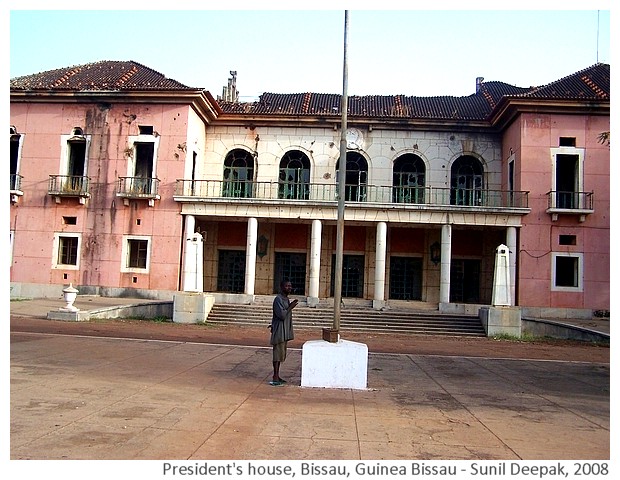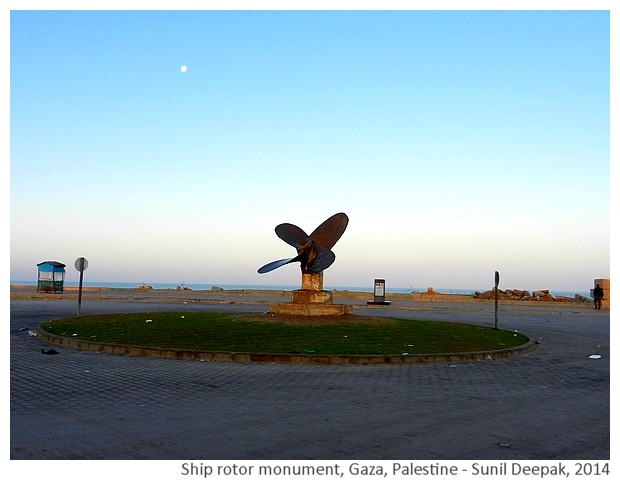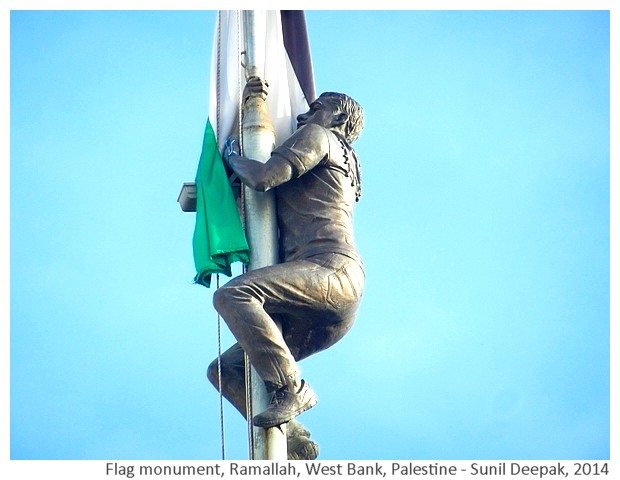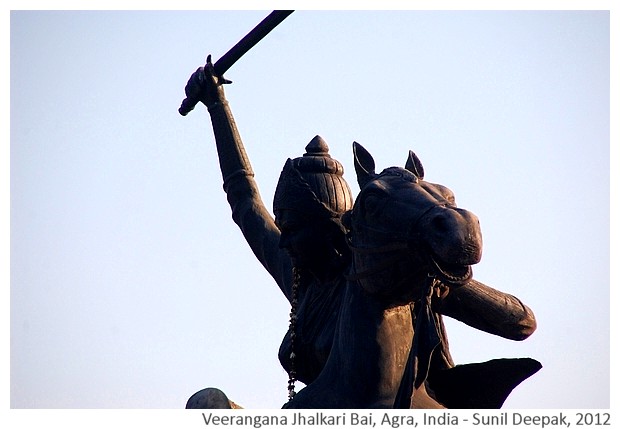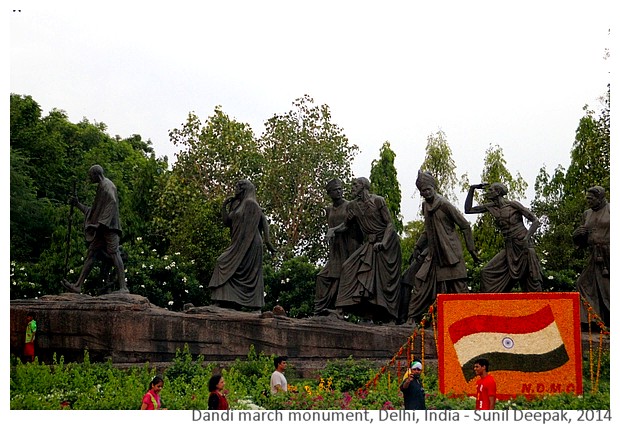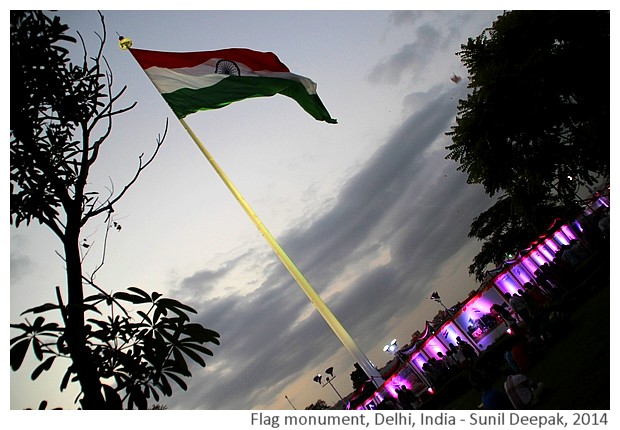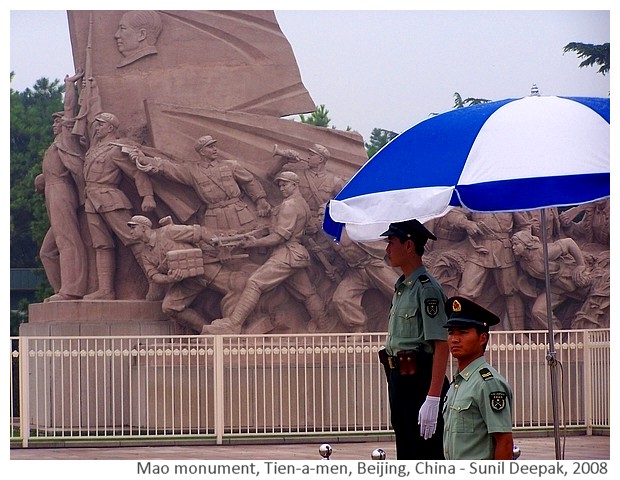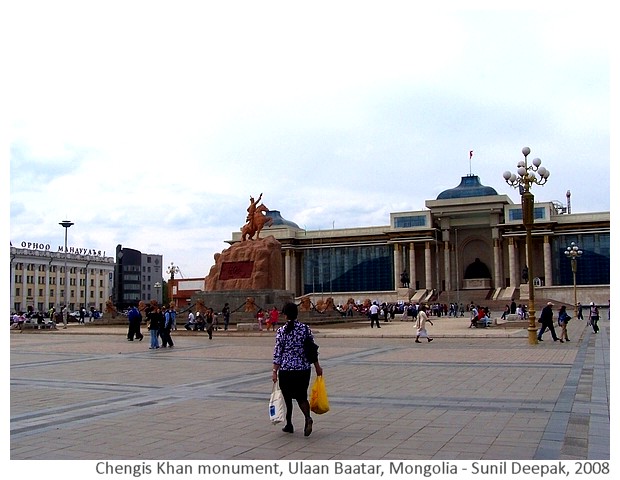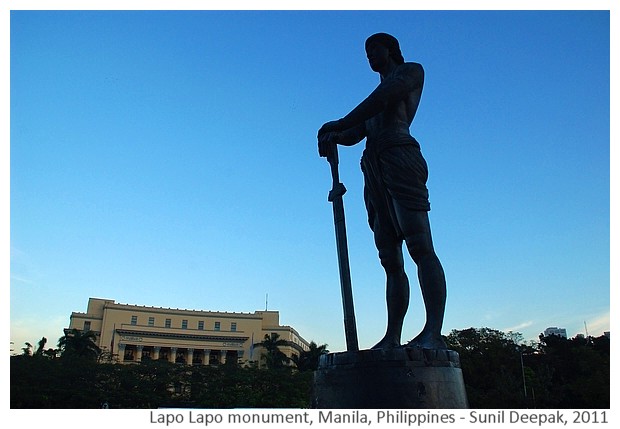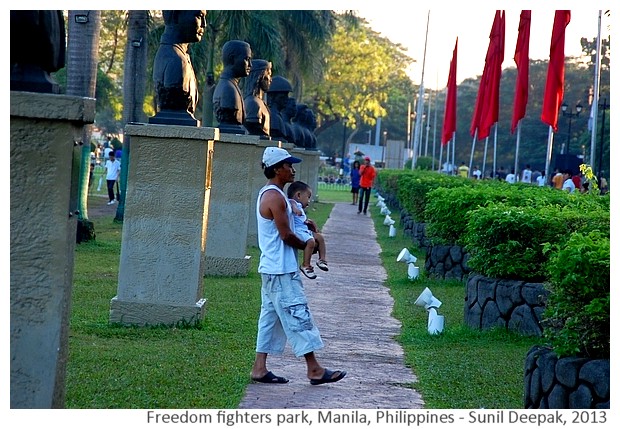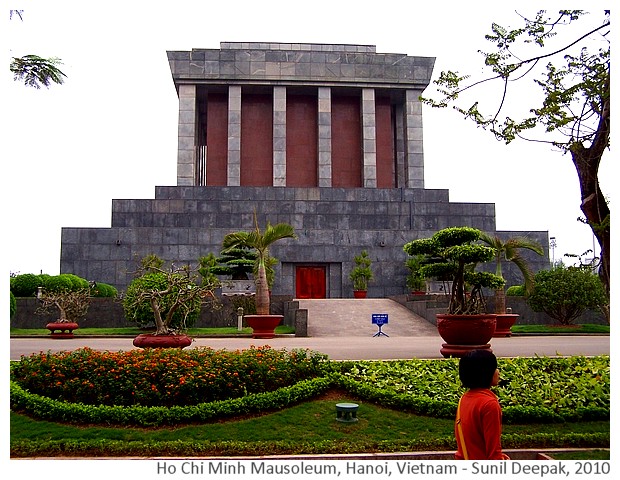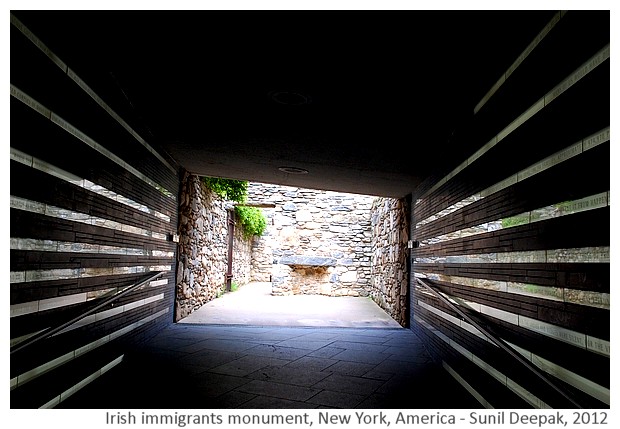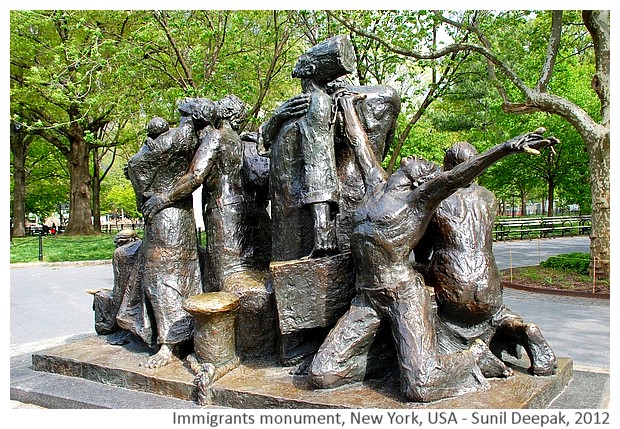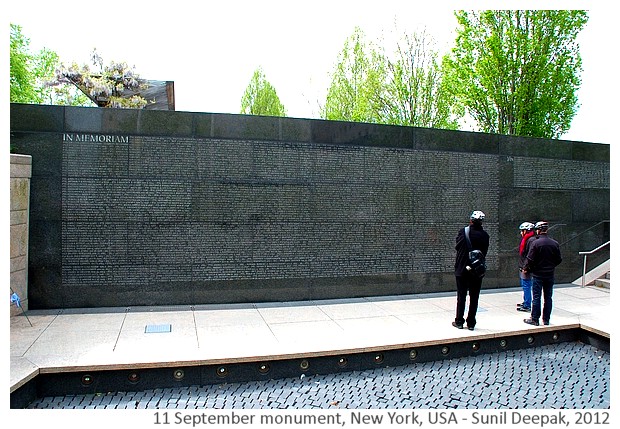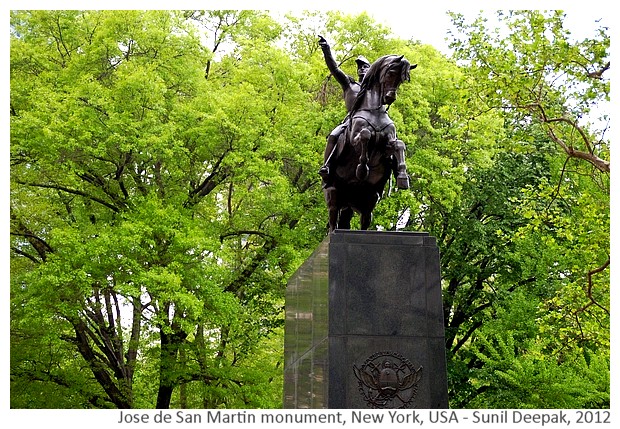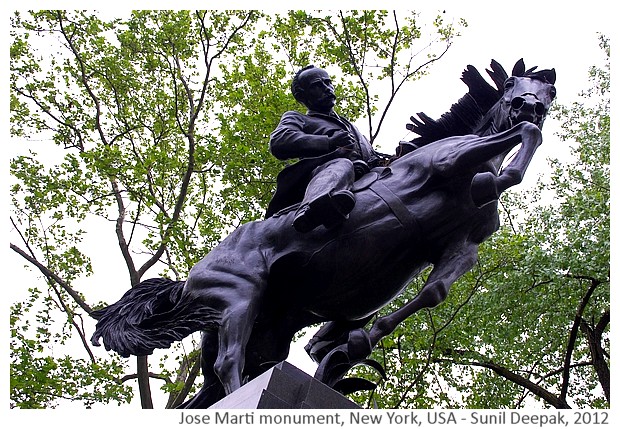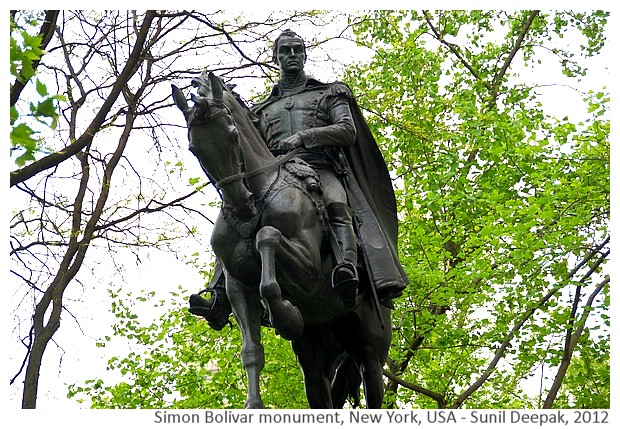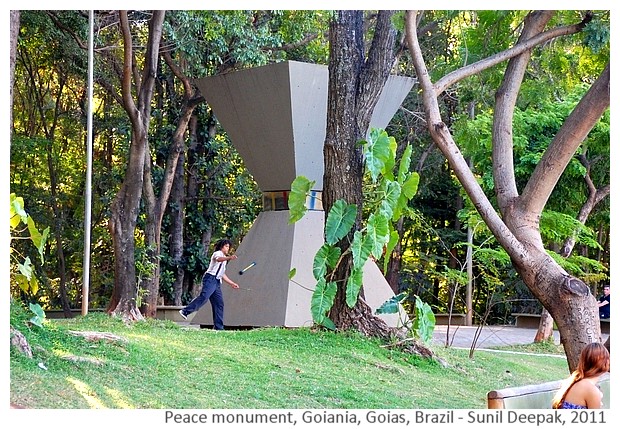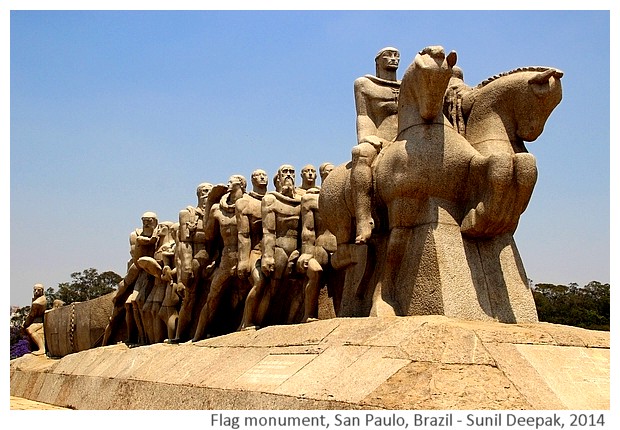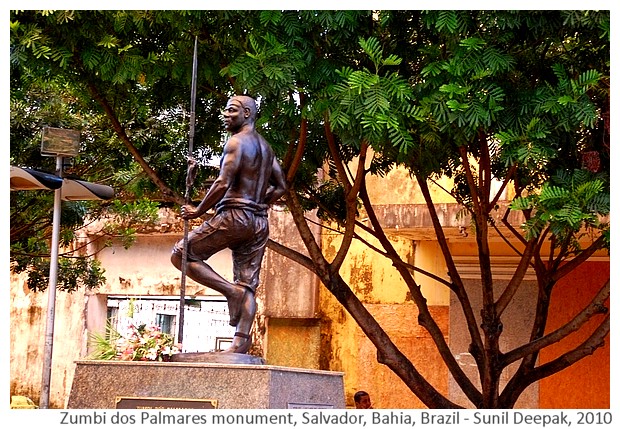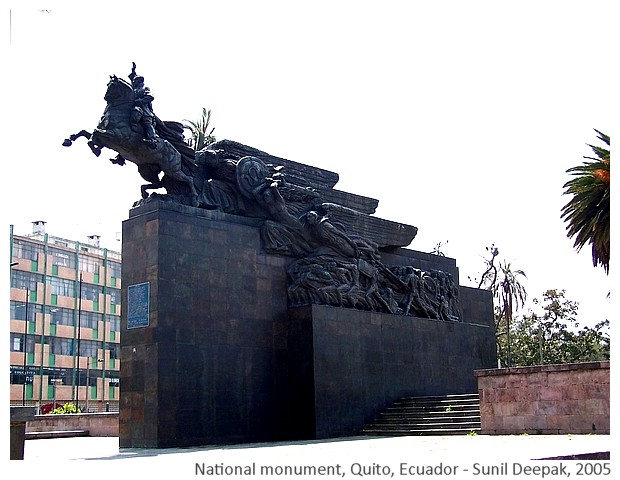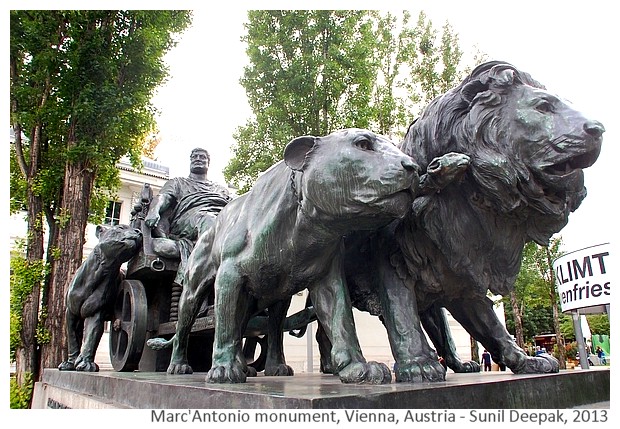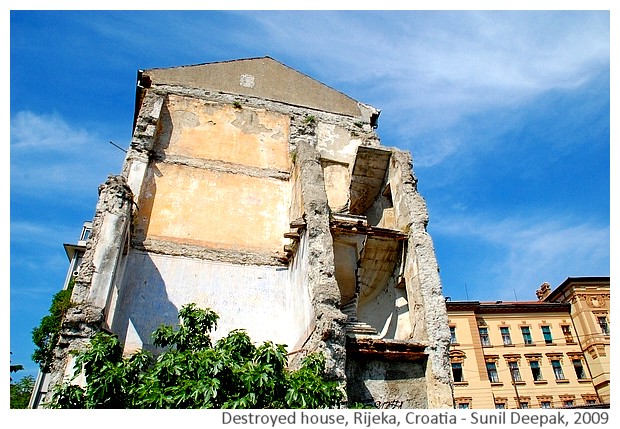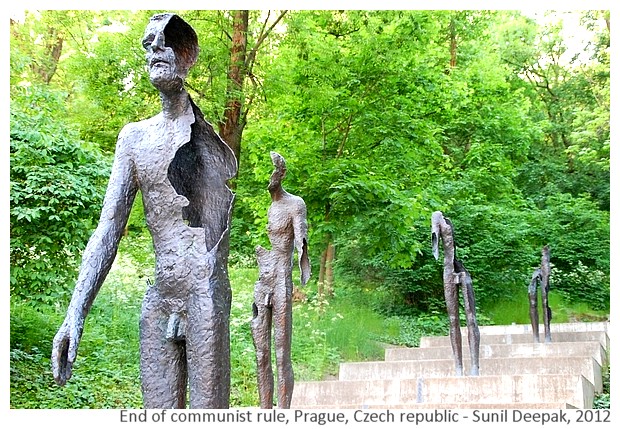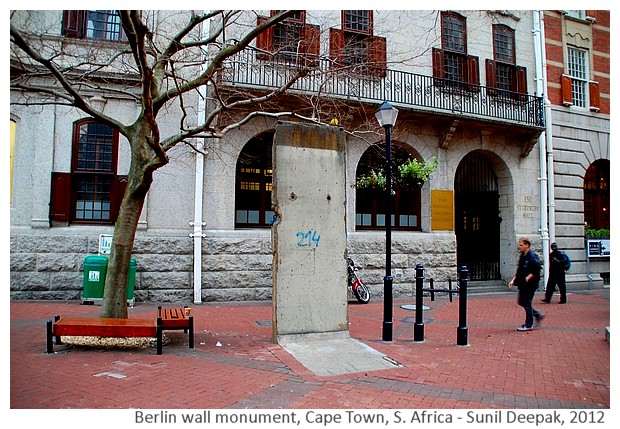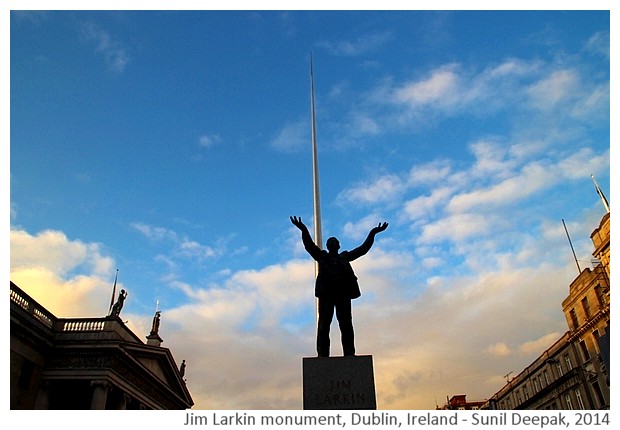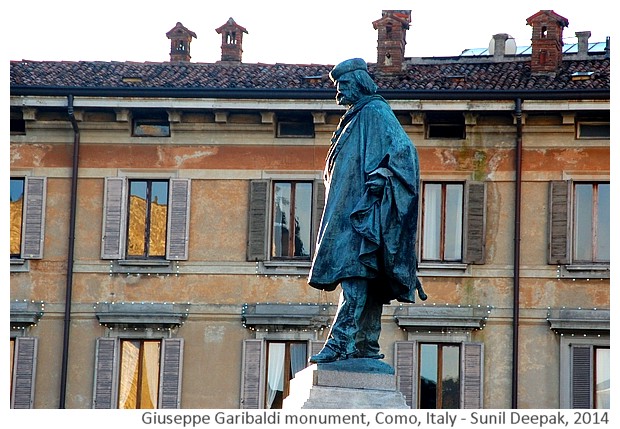Over the past 35 years, I must have visited Brazil at least ten times, however it was a long time since I had been to Rio. This journey took me back to Rio de Janeiro after almost 20 years. It was also an opportunity to visit two other little known cities - Niteroi and Campo Grande. I could also see the works of two important personalities - the Brazilian architect Oscar Niemeyer and the Chinese artist Ai Wei Wei. Here are some notes from my Brazil diary.
I was staying with a friend near the medical college and one evening, went for a walk to the Lago do Amor (Lake of Love), which had a large number of white herons and a funny looking sculpture of two kissing fish (in the image below).
Campo Grande
Campo Grande is a relatively new capital town of the state of Mato Grosso do Sul, which was carved out of the southern part of Mato Grosso in 1977. The city has grown mostly over the last 20 years, though it is a relatively small capital with less than a million inhabitants. I was there for a few days to conduct a couple of seminars on community-based rehabilitation (CBR) and emancipatory disability research (EDR) in the schools of nursing and physiotherapy. It seemed a kind of unexiciting town, spread over a vast area with low anonymous kind of buildings.I was staying with a friend near the medical college and one evening, went for a walk to the Lago do Amor (Lake of Love), which had a large number of white herons and a funny looking sculpture of two kissing fish (in the image below).
One morning I went to visit the city landmark, the Park of Indigenous Nations, named because of a museum about local indigenous cultures inside the park. The park has a nice lake, though when I visited, it had been dried and desilting was going on. It also has a futuristic looking acquarium, whose construction is going on for many years. The most beautiful part of this visit was to see free-moving animals including a Capybara and a whole group of Quati (in the image below).
The park also has a big Indios monument (in the image below).
Finally it has the Don Bosco Museum on Indegenous Cultures, which presents the different indio-cultures from this part of Brazil, especially from Pantanal area including Guatò, Kadiweu, Kaiowà-Guarani and different groups living along Uaupés river.
On my way back from Park, I got a woman Uber driver, Mari Gisele, who was overjoyed when she discovered that I was Indian. She said that she was an Ayovasca tribal shaman and that their indio-culture has many beliefs similar to Hinduism. While driving the car, she sang for me some Shiva prayers, concluding them with a loud "Jai Shambhu Shanker" and "Har Har Mahadev". It was completely unexpected and exciting.
Niteroi
This is an old historical town, situated across the Bay of Guanabara opposite Rio de Janeiro. Till 1970s, when Rio was the capital of Brazil, Nietroi was the capital of Rio de Janeiro state. Now, its claim to fame is the wonderful views of the Rio skyline across the bay. Another reason of its fame are a group of buildings designed by Oscar Niemeyer.Alcohol Drinking Cultures in India and Brazil
I was staying close to the city centre and the boat terminal, from where a 20 minutes boat ride takes you to Rio. One evening I went for a walk along Avenida Milton Tavares. Along the sea, the road had small shacks, where people sat drinking beer and enjoying the view. It brought to my mind a similar walk along the sea in Fort Kochi in India and was wondering how the two cultures, Indian and Brazilian, have such distinct alcohol cultures. In Fort Kochi, you can't have a glass of cold beer except in some high class hotel or in dark and dingy bars, where people carry beer bottles wrapped in newspapers or drink fugitively to get drunk. Here, you just have a glass of cold beer just like you would have a soft drink. Most people just want a little buzz and they are not trying to get drunk.Island of Boa Viagem
The walk brought me to the beautiful island of Boa Viagem (Good journey), which is connected to mainland by a bridge (in the image below). Unfortunately, the island can't be visited since it is occupied by military. It is surprising how much power military has in Brazil, they occupy prime lands and are very much in your face. Since Brazil has no wars with any of its neighbours, the military is controlling the Brazilian people only. Probably the history of this military power goes back to the time when it was a military dictatorship.Further up from the island of Boa Viagem, is an iconic Niemeyer building - the saucer shaped Contemporary Art Museum, known as MAC. It looks like a space ship waiting to take off (in the image below). The permanent exhibition at MAC has the works of 4 Brazilian artists - Antonio Dias, Antonio Manuel, Ivan Serpa and Rubens Gerchman.
At the MAC, one evening I saw an amazing sunset with the red sky and beautiful skyline of Rio.
Another nice walk was towards the boat station. Beyond the boat station, I walked towards the bus terminal. Through the covered market I reached the Niemeyer park which has 3 buildings designed by Oscar Niemeyer. This reminded me of huge squares and futuristic buildings designed by him in Brazilia.
Another nice walk was towards the boat station. Beyond the boat station, I walked towards the bus terminal. Through the covered market I reached the Niemeyer park which has 3 buildings designed by Oscar Niemeyer. This reminded me of huge squares and futuristic buildings designed by him in Brazilia.
Rio de Janeiro
I could visit Rio a few times. The first time, I had a seminar in the school of nursing which is located just next to the famous landmark, the Pao de Acucar (Sugarloaf hill). Twenty years ago, I had taken the cable car to visit its top. During lunch time, with some of the professors, we went to eat in the military canteen located in front of it (even here Military occupies some of the best prime land of the city). The image below has me with the teachers of the School of Nursing and some Brazilian friends.
One day in Rio, I went to see the Museum de Amanha (Tomorrow's museum). It has a beautiful building, like a giant white alligator (in the image below). However, inside I was expecting to see more use of innovative technology, while it only has a lot of computer screens where you are expected to read about the future and the climate change.
I also went to see city art museum, contemporary art museum and the second world war memorial.
However, the highlight of my visit to Rio was to accidentally find an exhibition of the Chinese artist Ai Wei Wei, which was absolutely amazing. WeiWei is like Niemeyer, some of his installations are massive. I hope to write one full post about this exhibition. Here let me tell you about one of his installations, which had hundreds of ceramic flowers woven into a white carpet. This installation referred to the period when he was under house arrest in China. To protest, he had put a bicycle in front of his house and everyday in the bicycle basket he used to put flowers. These ceramic flowers are a representation of his flower-protest (a close-up in the image below).
However, the highlight of my visit to Rio was to accidentally find an exhibition of the Chinese artist Ai Wei Wei, which was absolutely amazing. WeiWei is like Niemeyer, some of his installations are massive. I hope to write one full post about this exhibition. Here let me tell you about one of his installations, which had hundreds of ceramic flowers woven into a white carpet. This installation referred to the period when he was under house arrest in China. To protest, he had put a bicycle in front of his house and everyday in the bicycle basket he used to put flowers. These ceramic flowers are a representation of his flower-protest (a close-up in the image below).
Another wonderful experience was at the Rio Museum of Contemporary Art. It was a Saturday and outside the museum, different groups of young people were practicing dances. It was there that from inside the museum glass walls, I saw an amazing dance performance. Most persons of this group were young trans-sexual young men and their dance was just amazing. I was so fascinated by them that I forgot that I could have made a video. By the time I had thought of the video, they had almost finished.
Conclusions
I missed not seeing so many of my old Brazilian friends during this visit. The highlights of this visit were the Oscar Niemeyer buildings and the Wei Wei exhibition. I felt that the two of them, each in his own distinct way, shared a love of big spaces and elaborate designs - both have their fantasy worlds which are placed in a world of giants where the human beings are like the liliputians.
I was afraid of carrying my DSLR camera on this trip since Rio has a bad reputation. So all the pictures were taken with my mobile phone and they are not bad. Since the DSLR camera weighs so much, I think that in future, I am going to take more pictures with my mobile.
I was afraid of carrying my DSLR camera on this trip since Rio has a bad reputation. So all the pictures were taken with my mobile phone and they are not bad. Since the DSLR camera weighs so much, I think that in future, I am going to take more pictures with my mobile.
Let me close this post with another beautiful moment in Rio. It was evening and the sun was going down. With some friends we went for a beer near the tiny Urca port behind the Sugarloaf hill. The view of Corcovado with the giant statue of Jesus at the top and the sun going down behind it was absolutely amazing, as you can see from the image above.
*****
#riodejaneiro #niteroi #campogrande #oscarniemeyer #aiweiwei #brazildiary





